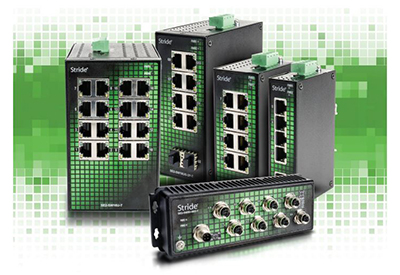Your Guide to Electromechanical Relays
October 2, 2024

What Are Electric Relays?
Electromechanical relays are electrically operated switches that control circuits by opening and closing contacts. They receive an electrical signal from an external source and transmit it to other equipment by toggling the switch on or off. This mechanism allows relays to manage high-power applications with low-power signals, ensuring safe and efficient operations.
Key Components of Electromechanical Relays
Electromechanical relays consist of several critical components, each essential for their operation:
- Electromagnet: This generates a magnetic field when energized. In electromagnetic relays, this component attracts the armature to open or close contacts.
- Armature: A movable lever that responds to the electromagnet’s magnetic field by moving to make or break connections with contacts.
- Contacts: Metal pieces that open and close circuits within the relay. Examples include normally open (NO) and normally closed (NC) contacts, which define how the circuit behaves without power.
- Spring: Provides tension to return the armature to its original position when de-energized, ensuring reliable operation.
- Coil: A wire wound around a metal core, the coil generates an electromagnetic field when current passes through it, activating the relay.
- Housing: Encloses all internal components, protecting them from physical damage and environmental factors like dust and moisture.
- Frame: This heavy-duty structure holds all internal components together, providing support and protection.
Understanding these core components offers insight into how relays work in various applications, from industrial automation to household appliances.
How Do Electromechanical Relays Work?
Electromechanical relays operate by utilizing an electromagnet to control the switching mechanism. When a low-power electrical signal energizes the electromagnet, it generates a magnetic field that attracts the armature. This movement causes the contacts to either open or close, depending on the relay’s design.
The components include:
- Electromagnet: Generates a magnetic field when energized.
- Armature: Moves in response to the magnetic field.
- Spring: Returns the armature to its original position when de-energized.
- Contacts: Open or close circuits based on armature position.
In operation, electromechanical relays convert small electrical inputs into larger currents for high-power applications. They ensure precise control over devices such as industrial machinery and household appliances without direct human intervention. Understanding how these relays work is essential for grasping their role in managing complex electrical systems efficiently and safely.
Phoenix Contact Electromechanical Relays
Phoenix Contact offers versatile electromechanical relays suited for various industrial applications. The PLC-INTERFACE series combines a relay interface and electronic fuse within a compact width of just 6.2 mm, optimizing space in control cabinets. These relays feature configurable nominal current and shutdown behavior via DIP switches, enhancing adaptability.
Check out this video for an in-depth look at the PLC INTERFACE relay series, featuring insights from Phoenix Contact experts:
Watch the full PLC INTERFACE relay series here
Their RIFLINE complete series includes universal industrial relays designed for coupling, timer functions, or replacing miniature contactors. This series supports all standard relay applications such as signal isolation, multiplication, and amplification. The plug-in design ensures quick installation and reliable operation.
Rifline Series Relay
Both the PLC-INTERFACE and RIFLINE complete relays support reduced wiring efforts through comprehensive accessories like bridging options and system cabling solutions. Compatibility with existing installations allows seamless integration for function extension.
These features make Phoenix Contact electromechanical relays ideal for diverse uses in automation systems, power controls, and other technological fields where efficient signal management is crucial.
Shop Phoenix Contact Electromechanical Relays
Types of Electromechanical Relays
Electromechanical relays come in various types, each designed for specific applications and operational environments. These include General Purpose Relays, Machine Control Relays, and Reed Relays.
General Purpose Relays
General purpose relays are versatile components used in numerous applications. They manage low to moderate power loads and find uses in household appliances, automotive systems, and industrial controls. These relays offer reliable performance with a simple design comprising an electromagnet and a set of contacts.
Machine Control Relays
Machine control relays are essential in industrial automation. They handle high-power circuits required for operating machinery and automated processes. Featuring robust construction, these relays ensure reliability under demanding conditions. Examples include motor starters and overload protection devices employed in manufacturing plants.
Reed Relays
Reed relays consist of reed switches encased within a coil. Their compact size makes them ideal for applications needing fast switching speeds with minimal space requirements. Common uses include telecommunications equipment, medical devices, and instrumentation systems where precise control is crucial.
Understanding the different types of electromechanical relays helps optimize their use across varied technological fields.
If you are unsure which electromechanical relay is best suited for your industrial needs, don’t hesitate to contact Proax. Their team of experts at Proax is ready to assist you in finding the perfect solution for your application.
Related Story
Phoenix Contact Circular Connectors – Comprehensive Guide
The role of reliable connection systems in industrial automation and electrical drive technology is highly important, with Phoenix Contact’s circular connectors being renowned for their robustness and adaptability. These products come in a range of sizes, designs, and capabilities, offering flexibility for various needs. They can be found in straight or angled configurations and are suitable for on-site assembly. These versatile connectors are known for their consistent performance and high-quality materials in diverse sectors.



